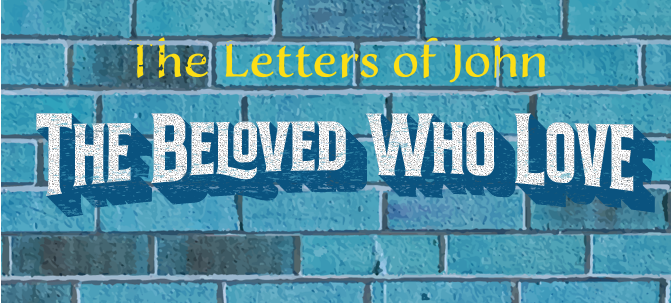Moore, Russell and Andrew T. Walker, eds. The Gospel & Racial Reconciliation. The Gospel for Life Series. Nashville: B&H Academic, 2016. 102 pp.
It happened again. Another black man was gunned down by police officers, this time in Baton Rouge, LA. His name was Alton Sterling, and, for the better part of the evening of July 5th, his name trended on Twitter as people expressed both outrage and grief. And then the next day, it happened once more. Philando Castile was his name. Like Alton, Philando’s name also trended on Twitter. Both men had their deaths captured on video. The scenes were harrowing. But death was not through. During a peaceful protest in response to the deaths of these two men, one vigilante ambushed and killed five Dallas police officers as an act of revenge. A week that started with the celebration of Independence Day—with fireworks and cookouts—ended with the reality of our divisions painted red with the blood of innocent men.
Since the death of Trayvon Martin and the birth of the Black Lives Matter movement, the reality that America has deep and abiding racial wounds has become plain to everyone with eyes to see. How should Christians respond to this? What do churches and their leaders need to do? We can rightly understand that the gospel not only reconciles us to God, but also reconciles us to one another and still not feel confident in how to respond to the racial strife we see. Thankfully, a new resource from the Ethics and Religious Liberty Commission of the Southern Baptist Convention is available to help Christians think through the difficult issue of racial reconciliation and how to begin putting it into practice.
Summary
The Gospel and Racial Reconciliation is edited by Russell Moore and Andrew Walker, with Walker writing the introduction to the book. The book is a total of 102 pages and includes five chapters from six authors. In the introduction, Walker acknowledges what many feel when it comes to discussion on race—it’s not worth having because the risk of committing an unforgivable sin is too great. Too many landmines lurk ready to destroy any naive person wandering into these discussions. But while acknowledging the complexity, Walker encourages us to “not let the headwinds of complexity discourage a steady course towards reconciliation” (3). In the end, Walker describes the goal of book as getting Christians and churches from being passive observers to engaged agents of gospel-change (3). In chapter one, J. Daniel Hays conducts a brief survey of what the Bible says regarding ethnicity and race (including interracial marriage and the ethnic composition of biblical Israel). In chapter two, Thabiti Anyabwile examines what the gospel says about racial reconciliation and how the gospel frees us to pursue racial reconciliation. In chapter three, Trillia Newbell considers how Christians should live by loving their neighbor and by getting to know black Christians as brother/sister because they are our brothers and sisters. In chapter four, Eric Mason deals with how churches should respond. Mason shows how race is both a sanctification issue and a spiritual warfare issue. He ends by sharing several things churches should not do and gives a few ideas for where churches can start to engage. Chapter five is co-authored by Matthew Hall and D.A. Horton. Hall and Horton call us to truth-telling when it comes to racism in America and in the church because without telling the truth, reconciliation cannot happen. They end with helpful suggestions for how white Christians can begin to engage in racial reconciliation.
Evaluation
Several years ago, I began to wake up to the racial strife in America, and I was unsure of how to begin processing the feelings of my heart. I wish I had this book back then. A lot of things I had to figure out on my own are handled in this book. Hays’ survey of the biblical record is rightly rooted in the image of God. If all men bear the image of God, then all men are inherently valuable and worthy of dignity and respect. Hays also helpfully refutes the “curse of Ham” as a basis for racial superiority.
Anyabwile’s chapter on the gospel was one of my favorites because it confronts something that I have found confusing in the response of many white Christians. “Many Christians are so afraid of the label Trillia Newbell’s chapter was also extremely helpful. Grounded in the command to love our neighbor, Newbell calls us to begin there in our pursuit of racial reconciliation. Love is the why of racial reconciliation. But another significant aspect she tackles is that we are family. We have all been adopted into the family of God, and, when rightly understood, this is a great motivator for pursuing racial reconciliation. I love that she used the word “pursue” (43). This is not something that just happens. White Christians must pursue reconciliation with our black brothers and sisters. It’s not enough to say that we’re okay if they show up at our church. We must look for ways to pursue it intentionally. That’s what family does—removing all obstacles to restore relationships. This leads to Eric Mason’s chapter on the church’s response. His treatment of racial reconciliation as spiritual war was extremely helpful. To pursue racial reconciliation is to make war on the principalities and powers that seek to divide. When we realize our battle isn’t against flesh and blood, it changes how we engage in the fight. The best part of the chapter is when he confronts the poor ways churches are attempting to deal with this. His strongest rebuke comes from churches that would force multiethnic where it’s not feasible. Multiethnic is “sexy” and the temptation is to say that all churches should be multiethnic, but, in reality, that’s not possible (64-65). Many places in the country are homogeneous and have little diversity within the community. I would slightly disagree with one aspect of his critique. Mason argues that even within diverse communities (such as Boston), there are first-generation realities that require Ethiopian, Cambodian or Portuguese churches (64). He states that forcing multi-ethnicity in these circumstances could cause more harm than good (64-65). I somewhat disagree. Why couldn’t a multiethnic churches launch an Ethiopian service? For instance, my church will be launching a Spanish service this August. The people who come to worship at this service will become part of Ashland Avenue Baptist Church if they join. I believe this is a way to bridge those first-generation realities when language barriers exist. Other than this small disagreement, Mason’s chapter is solid and chocked full of helpful insight and wisdom from a guy trying to do this in the local church. Matthew Hall and D.A. Horton’s chapter was my most highlighted. They breakdown the reality of race as a construct. It’s an ideology and has nothing to do with biology. This is extremely important for understanding the divisions that reside in America today. “Black” and “white” are categories that have always been “negotiable and fluid” (72). And if this is true, Christians can subvert these categories for the purpose of reconciliation. Next, Hall and Horton tackle America’s (and Southern Baptists’) messy history. And it’s necessary. They emphatically state that without telling the truth about our history, we cannot achieve reconciliation. We’ve got to be honest about where we came from. Again, they ground this call to truth-telling in the gospel. It’s possible to tell the truth about our past because the gospel frees us from our past. The most helpful part of the chapter are what I’d call the Four L’s of Reconciliation: Look, Listen, Learn, and Live. Listen is the strongest and most penetrating of the L’s, and it’s the one white Christians struggle with the most. The initial question they ask is probing: How can you grow in empathy for someone whose life experiences are so different from yours if you never have any interpersonal relationships with them? You don’t. So what do you do instead? You assume. And I believe this is the most important line in the whole book: “Assumption reigns sovereignly where honest communication is absent” (82). Assumption lies at the heart of our inability to have the difficult conversations racial reconciliation require. And assumption disappears when we’re sitting across the table from our black brother who is pouring out his heart to us. I know this is true in my life. One way this little book could have been strengthened is by an additional chapter or addendum on why minority Christians are not addressed directly in the book. Some may question why no chapters were devoted to addressing them (perhaps on how to receive the awkward and clumsy attempts at reconciliation). The book is definitely meant to engage “white” Christians and to make an argument for the gospel-rooted necessity of racial reconciliation, and some direct words regarding power and privilege, I believe, would have only added to the strength of this volume. Conclusion The Gospel and Racial Reconciliation is a fantastic book that would be of great encouragement to anyone seeking to think through the subject of racial reconciliation. The discussion questions at the end of each chapter also provide an easy way to use this book in a group setting. It will be a challenging book, especially for anyone who has never engaged with minority perspectives on race. But it’s well worth the challenge. The best part of the book is that you cannot read it, agree with the premise, and not go make a new friend. I think this book will achieve the goal Moore and Walker set for it, and I cannot recommend it more highly. Justin Camblin, Pastoral Intern and Staff Nerd at Ashland Avenue Baptist Church




